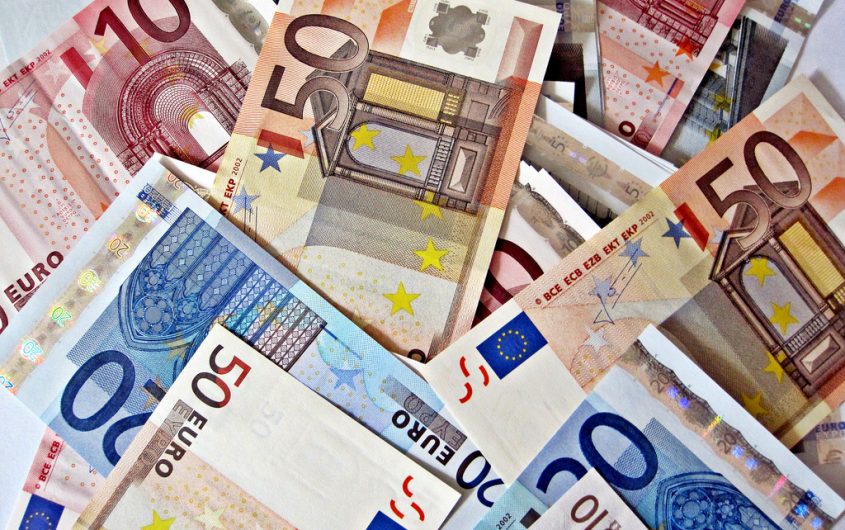
The Euro’s 20th Birthday: A Historical Perspective

Alexandra Bloomfield
Development and External Relations Associate
Alexandra Bloomfield is the Development and External Relations Associate at AICGS. Prior to joining AICGS, Ms. Bloomfield worked as a sales and marketing professional for several German companies in the United States and abroad, including Siemens AG and NOMOS Glashütte. She recently moved back to the United States from Munich in September 2017, after living in Germany for five years.
She holds an MA in History from the Universität Konstanz, Germany, where her research focused on early modern transatlantic history; and a BA in History from the University of Richmond, Virginia. She has also participated in additional study abroad programs with Universität Konstanz and Universität Wien.
__
The “euro” as a currency celebrated its 20th birthday on January 1, 2019. Like a typical millennial, the euro is the topic of many news stories, analyzing its dominance of current trends as well as all the things it’s doing wrong. And like the average college sophomore weighing the choices for his college major, it is time for the European Union to take a “candid and close introspection” with regard to the euro’s path forward, according to European Central Bank president Mario Draghi at a press conference in Pisa, Italy, on December 15, 2018. While in-depth discussions on a Eurozone budget, trade policies, and the performance of the European marketplace dominate the financial news headlines, the euro’s story reads much like an adventure novel, with challenges, triumphs, and defeat. Its history deserves a closer look.
The euro was officially born on January 1, 1999, but its story actually began several decades before. In fact, as early as 1929, German politician Gustav Stresemann proposed the idea of a common currency to the League of Nations barely two months before the stock market crash that caused the Great Depression. It wasn’t until some decades later that action was taken at a 1969 meeting of European leaders in The Hague with the creation of the Werner group, headed by Luxembourg prime minister Pierre Werner and tasked with writing a report as to how economic and monetary union (EMU) of the European Economic Community (EEC, the precursor to the EU) could be achieved. The resulting report in 1970 envisioned EMU within ten years, but economic instabilities (such as the collapse of the Bretton Woods system) over the course of the 1970s brought the project to a halt until 1979, when the European Monetary System (EMS) was established. The EMS fixed the exchange rate of currencies within the EEC to a newly created European Currency Unit, which was an average of these currencies. However, it functioned only as an accounting currency, and was ultimately replaced by the euro.
The EMS was a sign that economic integration of the future EU states was possible, but it was not a solid step in that direction. The Delors report, commissioned by then-president of the European Commission Jacques Delors, presented in 1989, detailed “the concrete stages leading towards economic and monetary union.”
The Delors report put forth three specific stages that would prepare the participating member states for a single currency. First, the initial preparations of that currency (1990-1994); second, the creation of the European Central Bank to be ready for the economic merger (1994-1999); and third, the fixing of exchange rates and official launch of the euro. During this time, the EEC became the European Union with the Treaty of Maastricht (1993).
Thus, the euro was “born” on January 1, 1999, the day it officially took effect—but only as an accounting currency. It was three years until paper notes and coinage were introduced to the public, in 2002.
The preamble to the euro reads much like a true success story.
The preamble to the euro reads much like a true success story. Indeed, much of the 1990s was an era of optimism for the EU, according to AGI Geoeconomics Program Director Peter Rashish: the end of the Cold War, German reunification, conclusion of hostilities in Northern Ireland, EU enlargement, implementation of the Schengen Agreement, and more. But much like our theoretical aforementioned college student who keeps changing his major, doubts linger over the future of the euro in light of its last twenty years. Mario Draghi pointed to the two distinct phases of the euro’s lifetime so far during a press conference in Frankfurt on December 13, 2018: one, a phase of great moderation thanks to years of preparation, and a second of “ongoing crisis,” likely referring to the 2008 financial crisis. The Wall Street Journal’s editorial board believes that the euro has “drifted from its original design” and believes the moderation that Draghi praised fell to the wayside post 2008; this lack of holding Eurozone nations to the rules explained the financial troubles in Greece and elsewhere. And Draghi himself admitted in Frankfurt that the benefits of the single currency have not been shared equally, and that national responsibility is somewhat to blame. He reiterated this sentiment again at the press conference in Pisa two days later.
Others at AGI, including Mr. Rashish, have published commentary on the policies and institutions for the euro. But for the purposes of this article, in its historical context the euro was born out of nearly a century of “dictatorship and misery” and represented pan-European unity and optimism in the face of collapsing oppressive postwar regimes. Its heroic origin story stands in contrast with what many view today as the drifting of Europe toward disunion, marred by terrorist threats and the slow but alarming rise of far-right extremism. As Draghi said somberly in Pisa, “It does not matter that we are emerging from the crisis. Elsewhere in the world, the fascination with illiberal prescriptions and regimes is spreading; we are seeing little steps back in history.”
It will be interesting to see what the next two decades will hold for Europe and how its single currency fares (if it even survives!). Many eyes will be on this year’s European parliamentary elections and what the results could mean for the future of the EU. The economic sentiment in Europe trended consistently negative in 2018, and whether Brexit or current U.S. trade policy or decades of unresolved inter-European issues is to blame is up for discussion. But EMU is not complete; and, in Draghi’s words, only with pan-European union of both currency and ideals can the aim of “a Europe that is united in freedom, peace, democracy, and prosperity” be achieved.








